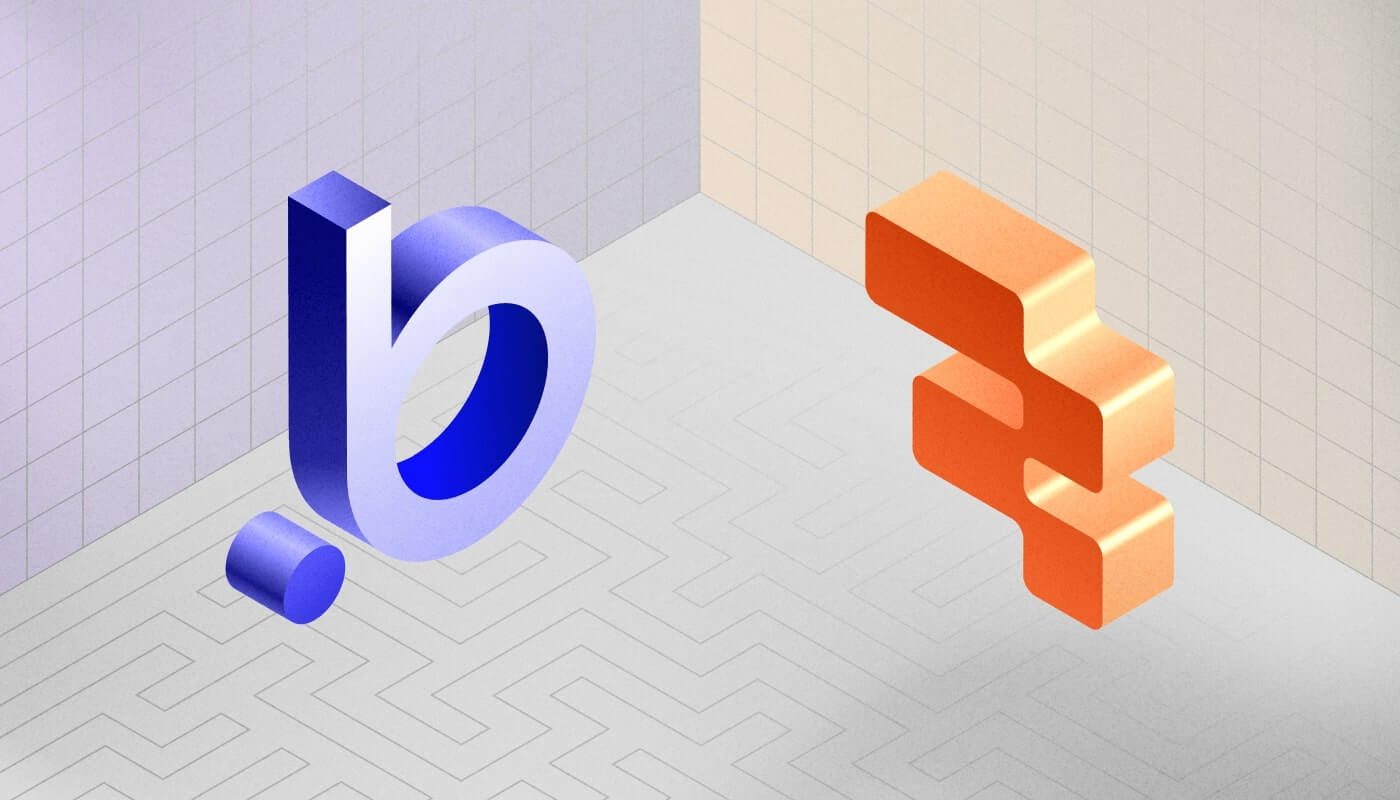
Bubble vs Adalo: Throughout Comparison
Building web and mobile apps without coding has never been easier, thanks to powerful no-code platforms like Adalo and Bubble. Both tools cater to entrepreneurs, startups, and businesses looking to create applications quickly, but they have distinct approaches and strengths. In this comparison, we'll break down their key differences and help you determine which one is the best fit for your needs. Plus, we'll introduce UI Bakery, another strong alternative worth considering.
Adalo: quick introduction
Adalo is a no-code development platform designed primarily for creating mobile and web applications. It provides an intuitive drag-and-drop interface, allowing users to design screens, add interactive elements, and integrate databases without writing code. It's particularly suited for entrepreneurs, small businesses, and startups looking to quickly launch an MVP (Minimum Viable Product) or prototype.
Bubble: a quick introduction
Bubble is a more flexible and feature-rich no-code platform that focuses on web applications. Unlike Adalo, which prioritizes mobile apps, Bubble provides extensive backend logic, database control, and API integrations, making it a great choice for complex SaaS platforms, marketplaces, and web-based business tools. While its learning curve is steeper than Adalo's, it allows for greater customization and scalability.
Adalo vs. Bubble: best use cases
Adalo would be best if you need a mobile-friendly app with a simple database and an easy-to-use design system. It's ideal for small businesses, startups, and personal projects. Adalo also has several limitations when you need complex workflows or advanced integrations. Keep in mind that the tool is focused on fast, visual app-building but doesn't scale well for more sophisticated features.
Bubble is better for scalable web apps requring custom workflows, deep API integrations, and advanced database capabilities. It's best for SaaS businesses, marketplaces, and data-heavy apps.
Adalo vs. Bubble: ease of use
Adalo is known for its intuitive drag-and-drop interface, so it's often a first choice for beginners who need to build mobile apps without a steep learning curve. The platform offers a visual approach to UI design, allowing users to create and customize layouts with minimal effort. While it provides flexibility, more complex workflows may require additional workarounds.
Bubble, in contrast, provides higher control over functionality and logic but comes with a steeper learning curve. Its visual programming capabilities allow for intricate workflows, dynamic data handling, and robust integrations. New users with no previous tech experience may experience a steep learning curve.
Adalo vs. Bubble: customization and features
Since Adalo is focused on mobile app development, it comes with a wide range of pre-built components, native app deployment, and push notifications. It has limited advanced backend logic and third-party integrations, so Adalo might be restrictive for complex apps.
Bubble is highly customizable and excels at web application development. It has features like workflow automation, database flexibility, and rich set of API integrations. Therefore, Bubble allows users to build feature-rich applications. Thetool lacks native mobile support so it may require third-party solutions for mobile deployment.
Adalo vs. Bubble: performance and scalability
Adalo suits small and mid-sized apps since it sometimes struggles with performance as complexity increases. Its database handling and load times are slow for large applications, particularly when dealing with high user traffic.
Bubble is more scalable compared to Adalo because of its database management and backend capabilities. Same as Adalo, Bubble sometime struggle with performance, as apps built on the platform tend to slow down with increased workflows and data processing. Its a common practices for users to optimize their apps or upgrade to higher-tier plans for better performance.
Adalo vs. Bubble: full-stack coverage
Adalo is a no-code solution for building the front-end of mobile apps, so it has limited backend capabilities. The tool presents basic database management, user authentication, and integrations. However, when it comes to complex backend logic, server-side processing, or custom APIs, Adalo's coverage is pretty limited.
Bubble, in contrast, is packed with more comprehensive full-stack capabilities. It can effectively handle front-end design, complex workflows, databases, user authentication, and even server-side logic. Bubble can be used to build fully functional web apps, integrate APIs, and manage workflows with no coding required. It also supports custom backend features through plugins and workflows, making it far more robust for full-stack development.
Adalo vs. Bubble: Ecosystem
Although Adalo comes with a smaller ecosystem, it still includes essential tools like pre-built templates, integrations, and a marketplace for components and plugins. It focuses on mobile app development, so its ecosystem is more limited to that space, and it lacks the depth seen in more flexible platforms.
Bubble has a much broader ecosystem filled with wider tool sets, plugins, and integrations. Because of that, it supports a wide variety of use cases, from SaaS to marketplaces, with extensive community support and resources. The Bubble marketplace has a vast selection of plugins, templates, and workflows, making it easier to extend functionality.
Adalo vs. Bubble: pricing
Adalo acts as an affordable entry point for beginners in terms of features and pricing, with free and low-cost plans. However, users will still need to; premium features like custom domains, API access, and higher performance require a paid subscription.
Bubble follows a flexible pricing structure, starting with a free plan and scaling up based on application complexity. While it offers more advanced functionality, higher-tier plans can be costly for users needing increased server capacity and performance.
Adalo vs. Bubble vs. UI Bakery: at-a-glance comparison
While Adalo and Bubble are definitely tools to go, you can consider other options like UI Bakery. The platform acts as a balance between ease of use and advanced customization. As a beginner-friendly low-code platform, UI Bakery provides a structured yet flexible UI builder with a low learning curve. It allows building simple internal tools and dashboards through templates while supporting deeper customization when required for more tech-savvy teams and complex requests.
Now let's compare all three tools based on key characteristics:
Last thoughts on the Adalo vs. Bubble comparison
Choosing between Adalo and Bubble depends on your needs—Adalo is great for mobile apps with a simple UI, while Bubble is ideal for feature-rich web applications. However, if you're looking for a flexible and scalable alternative with strong UI capabilities, UI Bakery is worth considering. It combines the best of both worlds, offering a powerful UI builder with backend integration and a seamless experience for building internal apps.





